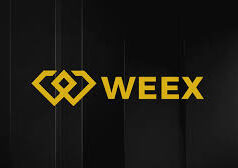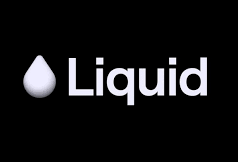The crypto world is buzzing with excitement as traders and prediction markets, particularly Polymarket, are betting big on Ether (ETH) reaching $5,000 by the end of August 2025. This bold forecast comes as Ethereum continues to solidify its position as the backbone of decentralized finance (DeFi), non-fungible tokens (NFTs), and layer-2 scaling solutions. With ETH currently trading around $2,600–$2,800 (as of mid-August 2025), a jump to $5,000 would mark a near-doubling in value within weeks. Let’s unpack why the market is so bullish, what’s driving this prediction, and whether this ambitious target is realistic.
The Polymarket Surge: Crowd Wisdom or Hype?
Polymarket, a decentralized prediction market platform built on Ethereum, has become a go-to for gauging sentiment on everything from crypto prices to global events. Recent data from Polymarket shows traders placing significant bets on ETH hitting $5,000 by August 31, 2025, with over $10 million in trading volume tied to this outcome. The platform’s “wisdom of the crowd” model aggregates bets to reflect market sentiment, and right now, it’s screaming optimism. Contracts predicting ETH at $5,000 are trading at high probabilities, suggesting strong confidence among participants.
Why the enthusiasm? Polymarket’s decentralized nature makes it a transparent gauge of what traders truly believe, free from the biases of centralized exchanges. Unlike traditional markets, where institutional players can skew narratives, Polymarket’s bets come from a diverse pool of crypto enthusiasts, analysts, and retail investors. This collective confidence is a powerful signal, but it’s not infallible—prediction markets have been wrong before, especially in volatile spaces like crypto.
Ethereum’s Fundamentals: Fueling the Rally
To understand why traders are so bullish, we need to look at Ethereum’s fundamentals. The network has undergone significant upgrades in recent years, including the 2022 Merge to proof-of-stake and the 2024 Dencun upgrade, which slashed layer-2 transaction costs. These changes have made Ethereum faster, cheaper, and more scalable, driving adoption across DeFi, gaming, and tokenized real-world assets (RWAs). As of August 2025, Ethereum’s total value locked (TVL) in DeFi protocols exceeds $100 billion, a sign of robust ecosystem growth.
Layer-2 solutions like Arbitrum, Optimism, and Base have also supercharged Ethereum’s scalability, processing thousands of transactions per second at a fraction of the cost of the mainnet. This has attracted developers and users alike, with dApps (decentralized applications) flourishing in sectors like decentralized exchanges (DEXs) and NFT marketplaces. BlackRock’s tokenized fund on Ethereum, launched earlier in 2025, has further legitimized the network, drawing institutional interest and boosting ETH’s utility as a staking asset.
On-chain data supports the bullish case. Ethereum’s staking yield hovers around 3–5%, attracting investors seeking passive income. Meanwhile, the network’s burn mechanism, introduced in EIP-1559, has removed over 4 million ETH from circulation since 2021, creating deflationary pressure that could drive prices higher. If demand for ETH continues to outpace supply, a $5,000 price tag starts to look less like a pipe dream and more like a plausible outcome.
Macro Factors: A Perfect Storm for ETH
Beyond Ethereum’s internal strengths, macroeconomic conditions are aligning in its favor. The U.S. Federal Reserve’s recent signals of potential rate cuts in late 2025 have sparked optimism in risk-on assets like cryptocurrencies. Lower interest rates typically weaken the dollar and push investors toward high-growth investments, including Bitcoin and Ether. With Bitcoin already testing new highs above $80,000 in 2025, ETH often follows as a beta play, amplifying its gains.
Global adoption of blockchain technology is another tailwind. Countries like Singapore and the UAE are doubling down on crypto-friendly regulations, while institutional players like Fidelity and JPMorgan are expanding their Ethereum-based offerings. The approval of spot ETH ETFs in the U.S. in 2024 has also opened the floodgates for institutional capital, with billions flowing into these funds in 2025 alone. If this momentum continues, it could provide the liquidity needed to propel ETH toward $5,000.
Technical Signals: Charts Pointing Upward
Technical analysis is adding fuel to the bullish fire. ETH’s price has been forming a bullish ascending triangle pattern since early 2025, with higher lows signaling strong buyer support around $2,500. A breakout above the $3,000 resistance level, which ETH cleared in early August, has traders eyeing $4,000 as the next major hurdle. Relative Strength Index (RSI) and Moving Average Convergence Divergence (MACD) indicators show bullish momentum, with no immediate signs of overbought conditions.
Historical patterns also support the $5,000 thesis. During the 2021 bull run, ETH surged from $2,000 to $4,800 in just a few months, driven by similar DeFi and NFT catalysts. With Ethereum’s fundamentals stronger than ever and market sentiment at fever pitch, a comparable rally isn’t out of the question. However, traders should remain cautious—crypto markets are notoriously volatile, and a sudden correction could derail the rally if macroeconomic conditions shift.
Risks to the $5,000 Dream
No price prediction is complete without acknowledging the risks. Ethereum faces competition from high-performance layer-1 blockchains like Solana and Avalanche, which offer faster transactions and lower fees. If developers migrate to these alternatives, Ethereum’s dominance could wane, capping ETH’s price upside. Regulatory uncertainty also looms large—while the U.S. has embraced ETH ETFs, a crackdown on DeFi or staking could spook investors.
Market manipulation is another concern. Crypto markets are still prone to whale-driven pumps and dumps, and Polymarket’s $5,000 bets could be skewed by coordinated efforts to inflate sentiment. A black-swan event, like a major hack or geopolitical crisis, could also trigger a broader market sell-off, dragging ETH down with it. Investors betting on $5,000 should keep stop-losses tight and diversify to mitigate these risks.
The Bigger Picture: Ethereum’s Long-Term Potential
Even if ETH doesn’t hit $5,000 by August’s end, the long-term outlook remains bright. Ethereum’s role as the world’s leading smart contract platform is unchallenged, and its roadmap includes further upgrades like sharding, which could boost capacity even more. The network’s transition to proof-of-stake has also made it more environmentally friendly, appealing to ESG-conscious investors.
Polymarket’s prediction reflects a broader truth: Ethereum is no longer just a cryptocurrency—it’s a global infrastructure for decentralized innovation. From tokenized real estate to decentralized social networks, Ethereum is powering the next wave of the internet. A $5,000 price would value Ethereum’s market cap at roughly $600 billion, still below Bitcoin’s but a testament to its growing influence.
Final Take: Is $5,000 Within Reach?
The $5,000 ETH prediction is ambitious but not impossible. Polymarket’s bets, combined with Ethereum’s strong fundamentals, bullish technicals, and favorable macro conditions, make a compelling case for a near-term surge. However, crypto’s volatility demands caution—traders should stay informed, manage risks, and avoid getting swept up in hype. Whether ETH hits $5,000 by August’s end or later in 2025, one thing is clear: Ethereum’s star is rising, and the journey to new highs is just beginning.
Sources:
- Polymarket data and trading volume accessed via platform interface, August 2025.
- Ethereum on-chain metrics from DefiLlama and Etherscan.
- Market analysis from CoinDesk and Cointelegraph, August 2025.
- Federal Reserve rate cut signals reported by Bloomberg, July 2025.
- ETH ETF flows tracked by Morningstar, August 2025.




























That Pectra thing sounds cool, but I don’t get how it pumps the price.
I’m pumped for ETH, but $5,000 by August feels like a stretch
Layer-2’s killing it, but what if profit-taking kicks in
Think we’ll see $6k if it breaks $4,800
It’s chilling at $4,300 now, and that $4,800 wall’s been stubborn
That $5.4B ETF inflow in July is nuts, and the Pectra upgrade’s got everyone hyped.
With staking demand and Layer-2s like Arbitrum popping off, I’m kinda believing it
ETH to $5,000 by August’s end? Let’s go